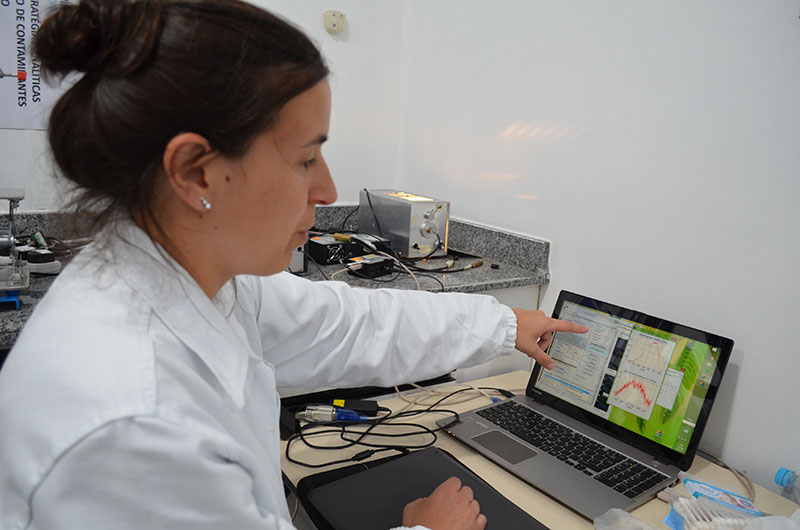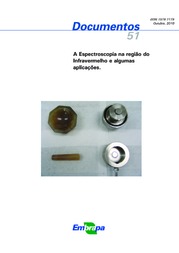Partnership between Embrapa and Scottish university will adapt new spectroscopy techniques for Brazilian agriculture
Partnership between Embrapa and Scottish university will adapt new spectroscopy techniques for Brazilian agriculture
Photo: Edna Santos

O objetivo da equipe da Embrapa Algodão é adotar a técnica para resolver problemas analíticos na área agrícola
In the last fortnight of September, Embrapa Cotton welcomes the visiting scholar Carla Ferreira, from the University of Strathclyde, in Scotland, to start a collaboration involving feasibility studies on a new technique and instrumentation for Spatially and Angularly Resolved Diffuse Reflectance Measurement (SAR-DRM). Developed by the Scottish university, the prototype based on Near Infrared Spectroscopy (NIR) allows the extraction of a larger quantity of information from samples faster and with more precision without destroying them.
“This equipment uses several sensors attached to a single probe, at different distances and angles between the detector and the light source, to obtain a much larger quantity of information about the sample's behavior, light spread and the absorption of the chemical compounds present”, explains the researcher Gledson Emídio, who participates in the partnership.
Carla Ferreira's visit is part of the project Spatially Resolved Spectroscopy for Agricultural Applications, approved in late 2018 by the Paraíba State Research Support Foundation - FAPESQ, as part of the call by the Newton Fund and UK Academies. At the Scottish university, the equipment is being tested jointly with the pharmaceutical industry in order to assess in-line processes, with a focus on quality control at all of the stages of producing drugs. The goal of the team at Embrapa Cotton, led by the researcher Everaldo Medeiros, is to adopt the technique to solve analytical problems in agriculture like, “for instance, initially identifying pathogens in cotton seeds in a simple and practical way for fast decision-making. Another challenge is to define indicators to measure cotton wool quality. With the technique that is based on light scattering, the aim is to explore the physical atributes that define the fiber's characteristics. We also want to identify the source of stickiness contamination in cotton wool”, he explains.
Another important demand from the production sector is diagnosing peanut toxins fast and with precision. “This would quite help seed and grain exports and imports by improving the end quality. In the milk production chain, the technique could be useful to detect blends and adulterations”, the researcher assesses.
“We have been conducting tests on seeds with and without fungi, and on cotton wool to assess if it is possible to distinguiss different fiber lengths; we are also going to experiment with milk samples to see if we can make goat and cow milk separation and observe when they are mixed, and with corn flours with different concentrations of protein, oil and dry matter”, Carla Ferreira reports.
“Such partnerships allow a deeper exchange with international groups of excellence which are fundamental for the access to technologies and knowledge that can elevate Embrapa's technical-scientific level. Furthermore, they promote Embrapa's work in the context of tropical agriculture internationally”, Medeiros asserts.
The researcher Carla Ferreira is part of a group led by the researcher Yi-chieh Chen, leader of the Measurement and Analytics Team at the University of Strathclyde's Chemical and Process Engineering Department and responsible for the development of the technique and instrumentation for Spatially and Angularly Resolved (SAR-DRM) spectroscopy.
Translation: Mariana Medeiros
Edna Santos (MTB/CE 1700)
Embrapa Cotton
Press inquiries
algodao.imprensa@embrapa.br
Phone number: +55 83 3182-4361
Further information on the topic
Citizen Attention Service (SAC)
www.embrapa.br/contact-us/sac/

